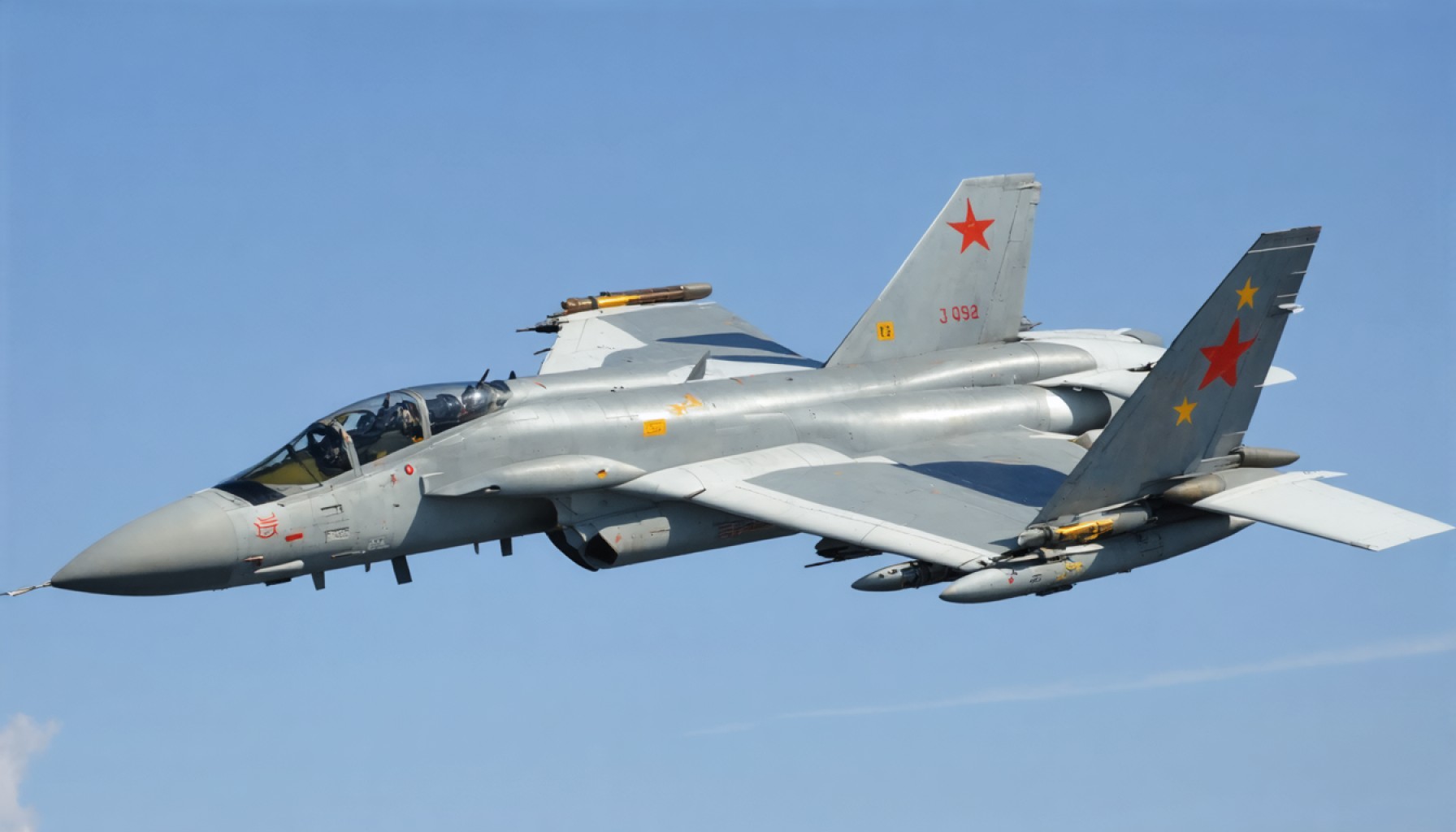- The J-36, crafted by Chengdu Aircraft Industry Group, is a tailless, trijet fighter aircraft, challenging conventional design norms.
- This aircraft’s unique configuration could offer enhanced thrust, redundancy, and internal weaponry capacity, signaling aspirations for sixth-generation capabilities.
- China’s J-36 is poised to compete with American aerial power, currently defined by the F-22 and F-35.
- The U.S. hints at developing its own sixth-generation aircraft, the F-47, further intensifying the aerial technological race.
- Secrecy surrounds the J-36 and its speculative counterpart, the J-50, echoing Cold War tensions and shaping future warfare dynamics.
- The ongoing aerial arms race highlights the global shift in military power dynamics and the relentless quest for technological superiority.
In the skies above Chengdu’s sprawling industrial heartland, a silhouette unlike any other cuts through the air—China’s J-36 aircraft. This enigmatic, tailless marvel, now etched into the consciousness of avgeeks and defense analysts worldwide, has sparked a flurry of fascination and speculation.
Crafted by the Chengdu Aircraft Industry Group, the J-36 defies conventional aircraft design. Triumphant in its trijet arrangement, it features two engines nestled under its wings and a third strategically placed behind the cockpit. This bold departure from the twin-engine norm serves not only as a testament to China’s engineering audacity but also as a potential wellspring of unmatched thrust and redundancy.
Stealthily inhabiting its undercarriage, cavernous spaces suggest a capacity for substantial internal weaponry—projecting aspirations of long-reaching aerial dominance. These attributes tantalizingly paint the picture of a sixth-generation fighter that could see China rival, or even usurp, the United States’ longstanding aerial supremacy—an accolade cemented by America’s fifth-generation stalwarts, the F-22 and F-35.
The tapestry of future warfare weaves through open skies and closed secrets. While former President Donald Trump has hinted at America’s own sixth-gen enigma, the F-47—a harbinger of autonomous drone coordination—the simmering tension underscores an imminent aerial arms race echoing Cold War rivalries.
Across the vast Pacific, China’s People’s Liberation Army maintains a strategic silence, shrouding both the J-36 and its companion, the speculative J-50, in a veil of secrecy. The world peers anxiously through the clouds for certainties, armed with more questions than answers.
This silent duel in the skies underscores humanity’s relentless pursuit of technological superiority. Each new development is not merely about one-upmanship but reflects the shifting dynamics of power, capable of redefining global military balance. The enigma of the J-36 thus not only challenges our understanding of aviation’s future but also serves as a sobering reminder: in the nuanced ballet of innovation and strategy, silence speaks volumes.
J-36: Unveiling the Enigmatic Powerhouse Redefining Aerial Warfare
The J-36 Aircraft: Redefining Aviation
China’s J-36 aircraft is igniting a global conversation about future aviation advancements and military strategies. Designed by the Chengdu Aircraft Industry Group, the J-36 breaks traditional norms with its trijet design, possibly ushering in a new era of aerial combat capabilities. But what makes this aircraft so remarkable, and what implications does its development have on the global stage?
Cutting-Edge Design and Capabilities
– Trijet Configuration: Unlike conventional twin-engine aircraft, the J-36 utilizes three engines, with two located under its wings and one behind the cockpit. This configuration potentially offers increased thrust and redundancy, which could lead to improved performance and survivability during combat operations.
– Stealth Technology: The J-36 is believed to include advanced stealth features, allowing it to evade radar detection and penetrate enemy airspace. This would position it as a crucial asset in modern warfare where stealth is paramount.
– Internal Weaponry Capacity: Its spacious undercarriage suggests a significant capacity for carrying weapons internally. This capability may allow the aircraft to maintain a stealthy profile while being heavily armed.
How the J-36 Fits Into Global Military Trends
– Sixth-Generation Fighter: The J-36 is purported to be part of the next wave of fighter jets classified as sixth-generation, which may include capabilities such as autonomous drone coordination, enhanced electronic warfare, and advanced AI integration.
– Global Arms Race: With the development of the J-36, China is potentially setting the stage to challenge U.S. aerial dominance, previously held by fifth-generation fighters like the F-22 Raptor and the F-35 Lightning II. This may result in an intensified focus on military advancements.
– Strategic Secrecy: By keeping much of the J-36’s specifications under wraps, China maintains strategic ambiguity, complicating its rivals’ military planning and procurement strategies.
Pressing Questions and Expert Insights
What sets the J-36 apart from previous Chinese aircraft?
Expert analyses highlight its unique triple-engine design and potential stealth capabilities, suggesting these innovations are stepping stones toward China establishing itself as a forerunner in aviation technology.
Who might China collaborate with for this aircraft?
While much of the J-36’s development appears to be a national endeavor, alliances with countries like Russia, known for its aviation expertise, could play a role in advancing technology exchange.
How does the J-36 impact geopolitical stability?
The unveiling of such advanced aircraft could spark concerns among neighboring countries and lead to a renewed focus on military readiness and defense spending globally.
Future Expectations: Predictions and Market Insights
– Technology Spin-offs: The advancements made with J-36 might trickle down into commercial aviation tech, especially regarding engine efficiency and stealth materials.
– Extended U.S.-China Rivalry: The aerospace developments from both nations could see a deeper strategic shift, affecting defense budgets, alliances, and regional dynamics.
Key Takeaways and Actionable Recommendations
– Understand the Evolution: Stay informed about the changing landscape of military aviation, recognizing new developments in technology and their potential global impacts.
– Explore Career Opportunities: For those interested in aerospace engineering, the field is rapidly evolving with these advancements, presenting innovative career paths.
– Encourage Diplomatic Engagement: Maintain awareness of international relations as defenses develop to support diplomatic efforts that aim to reduce tensions through transparent communication and treaty negotiations.
For more information on aerospace technology and developments, visit the official Lockheed Martin website.







